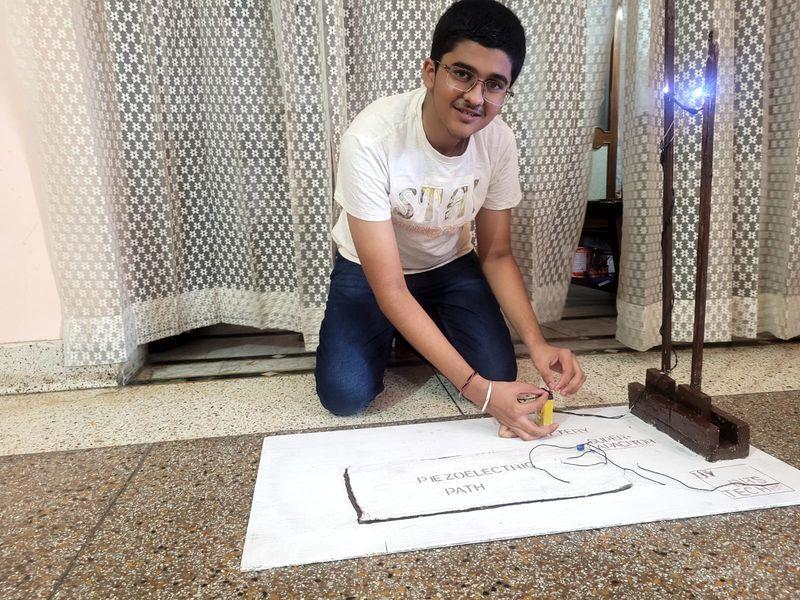
Hoshiarpur Student Builds Device to Generate Power from Footsteps
In a groundbreaking innovation, a Class 8 student from Hoshiarpur, Punjab, has developed a device that can generate electricity from one of the most ordinary and everyday activities – walking. Sanchit, the 13-year-old student, has created a science project called “Power beneath our feet” that uses piezoelectric technology to convert the kinetic energy generated by footsteps into electricity.
The device, which resembles a small foot mat, is designed to harness the energy produced by people walking on it. This innovative technology has the potential to revolutionize the way we think about power generation, providing a sustainable and eco-friendly alternative to traditional energy sources.
The project has already caught the attention of local authorities, scientists, and enthusiasts, who are impressed by Sanchit’s ingenuity and creativity. The device is still in its prototype phase, but it has shown promising results, with the ability to generate enough electricity to power small devices such as smartphones and laptops.
Sanchit’s inspiration for the project came from his curiosity about how to harness the energy generated by human movement. He spent several months researching and experimenting with different materials and technologies before developing his device.
“I was fascinated by the idea of generating power from human movement,” Sanchit said in an interview. “I wanted to find a way to convert the kinetic energy generated by footsteps into electricity. After months of research and experimentation, I finally developed a device that can do just that.”
The device uses piezoelectric materials, which generate an electric charge when subjected to mechanical stress. When a person walks on the device, their footsteps create pressure on the materials, causing them to generate an electric charge. The device is designed to capture and store this energy, which can then be used to power small devices.
The potential applications of Sanchit’s device are vast and varied. It could be used to power small devices such as smartphones and laptops, reducing the need for traditional energy sources and lowering carbon emissions. It could also be used in remote areas where access to traditional energy sources is limited, providing a sustainable and reliable source of power.
Moreover, the device has the potential to revolutionize the way we think about power generation, providing a new and innovative way to harness renewable energy. It could also be used in various industries such as healthcare, education, and entertainment, providing a new and sustainable way to power devices and equipment.
Sanchit’s project has also caught the attention of local authorities, who are impressed by his ingenuity and creativity. The Deputy Commissioner of Hoshiarpur, Kumar Amit, has praised Sanchit’s work, saying that it is a great example of innovation and entrepreneurship.
“Sanchit’s project is a testament to the potential of our young generation,” Kumar Amit said. “His innovative thinking and creativity are an inspiration to us all. We are proud of him and wish him all the best in his future endeavors.”
Sanchit’s device is still in its prototype phase, but it has shown promising results. With further development and testing, it has the potential to become a game-changer in the field of renewable energy.
As Sanchit continues to work on his project, he is already planning to take it to the next level. He is working with local scientists and experts to refine the design and improve its efficiency. He is also looking for opportunities to showcase his project and connect with other innovators and entrepreneurs who share his passion for sustainable energy.
In conclusion, Sanchit’s device is a groundbreaking innovation that has the potential to revolutionize the way we think about power generation. His project is a great example of the power of innovation and entrepreneurship, and it is an inspiration to us all. As we move forward, it is exciting to think about the possibilities and potential applications of this technology, and we can only hope that Sanchit’s project will be a catalyst for a new wave of innovation and sustainability.




